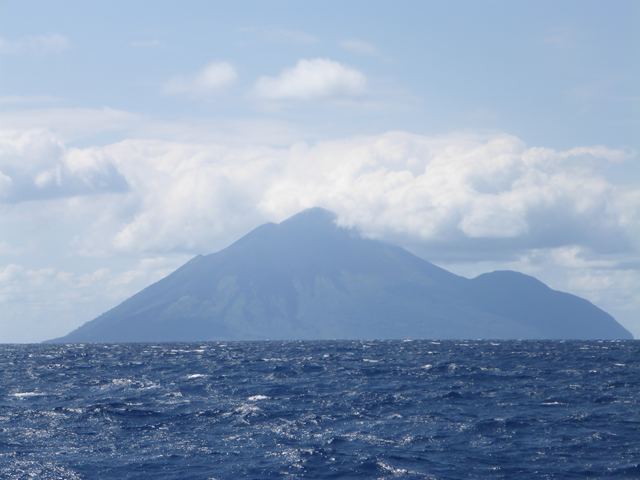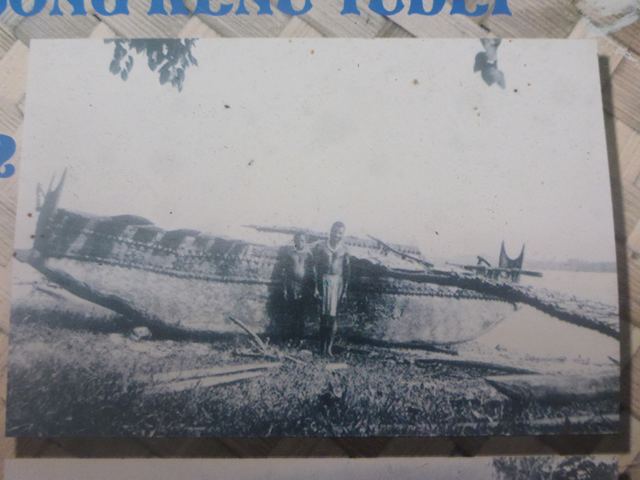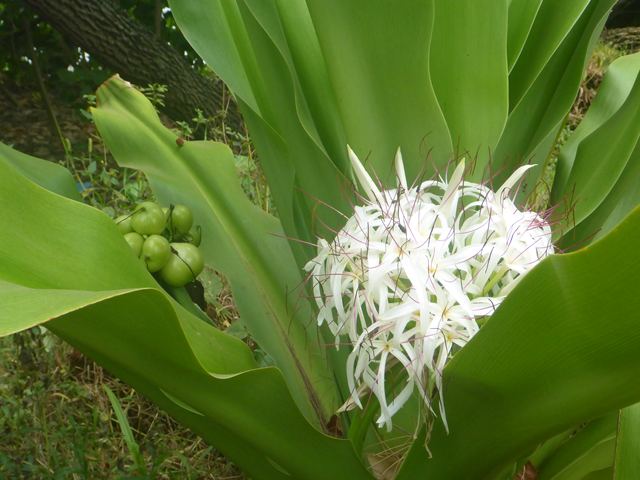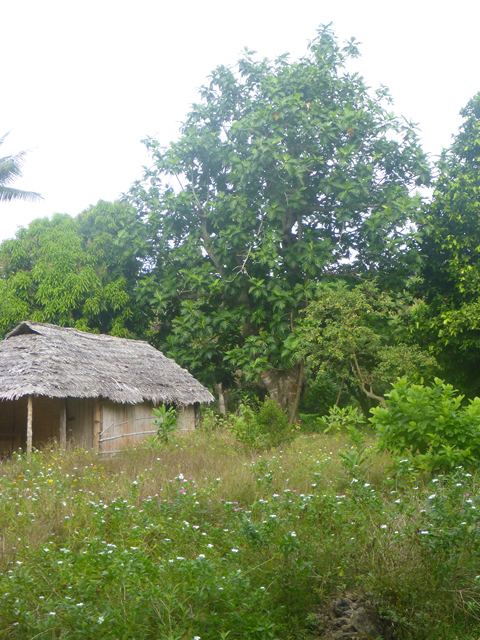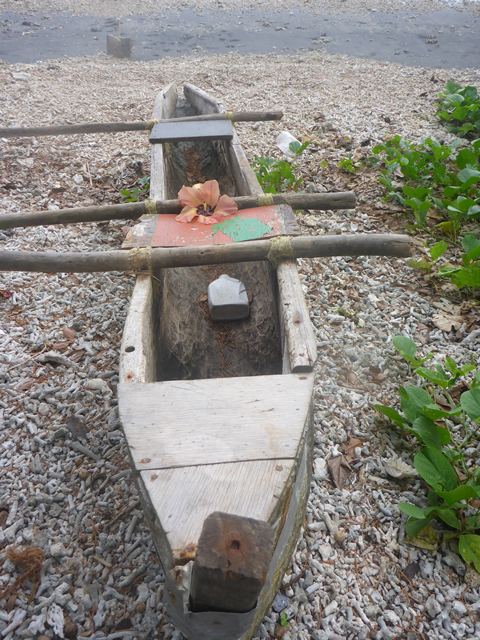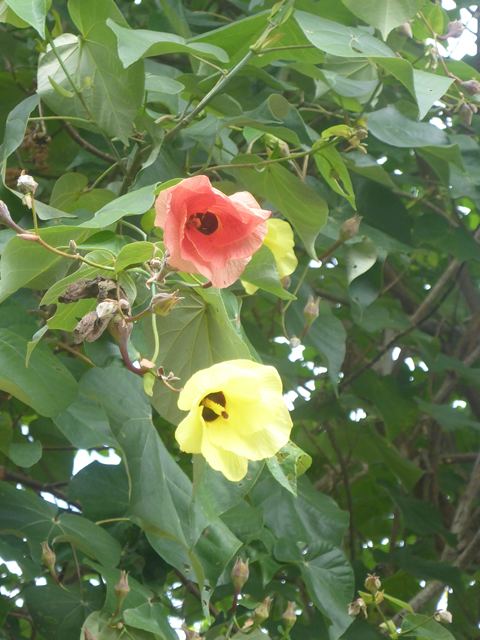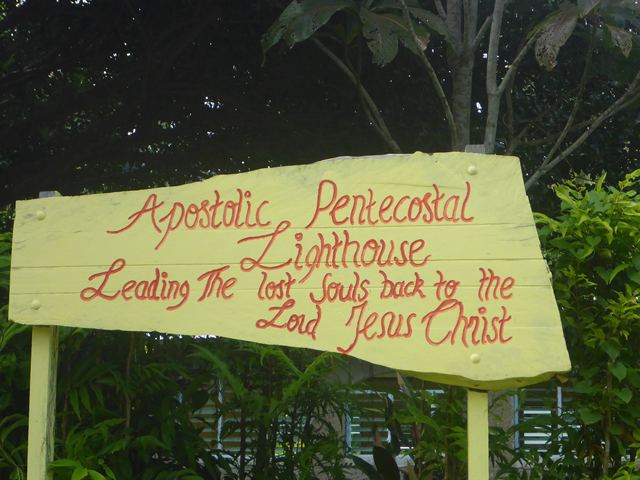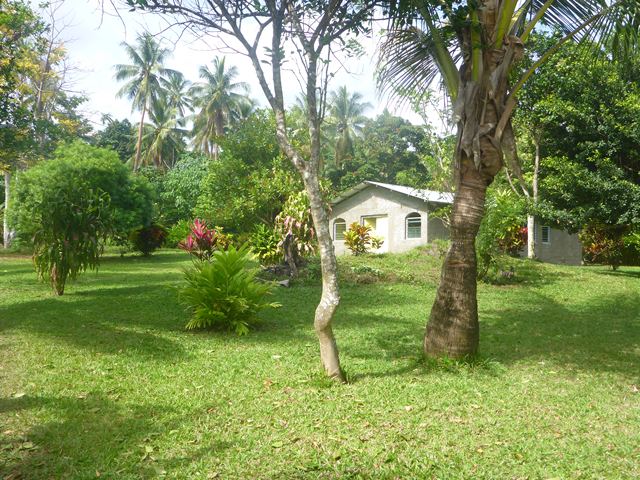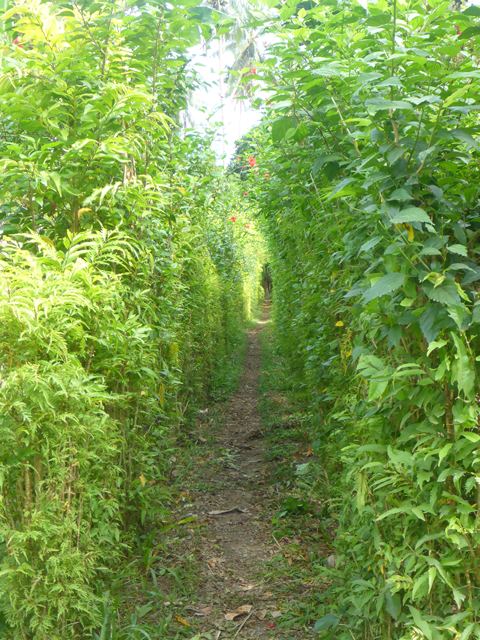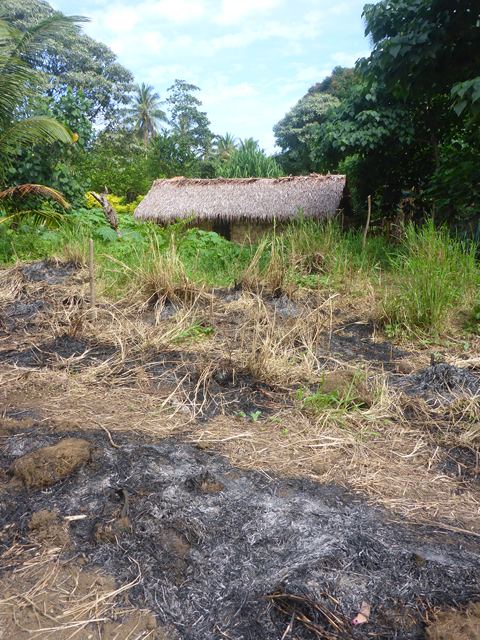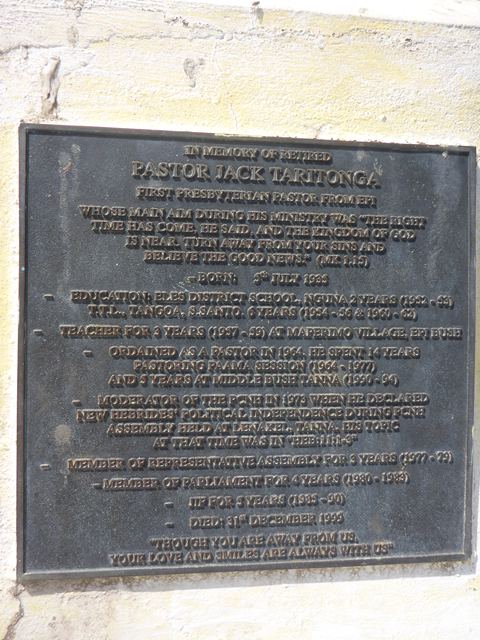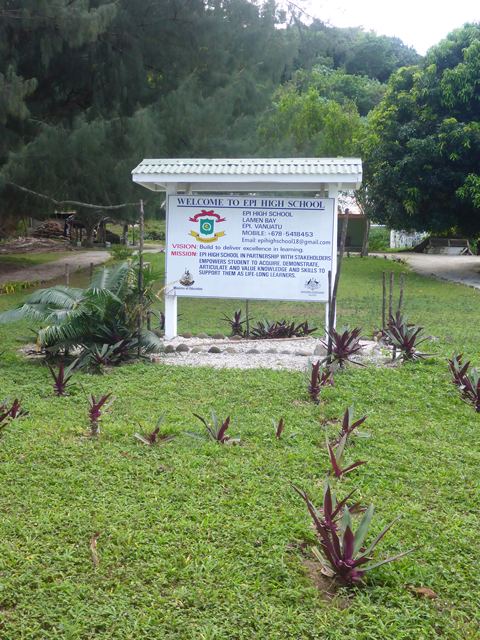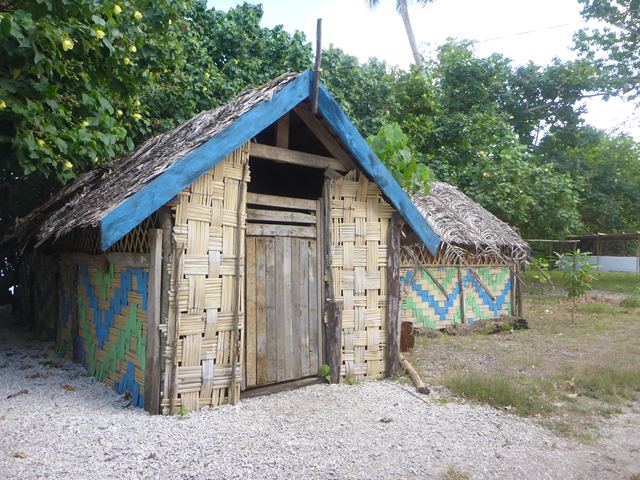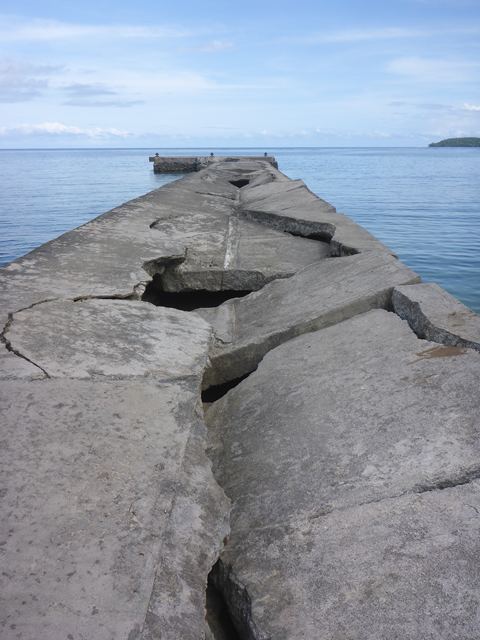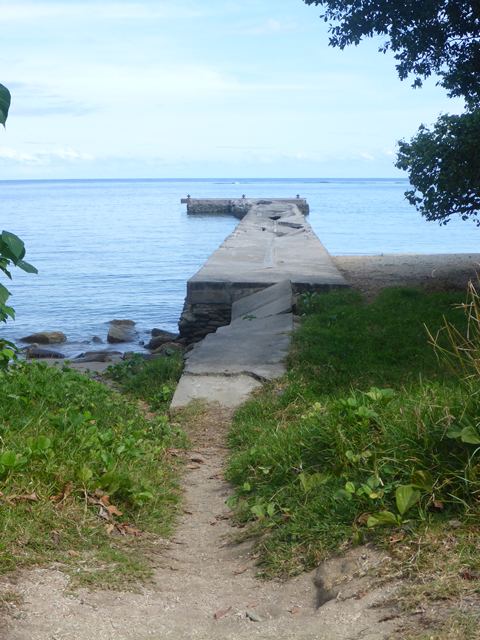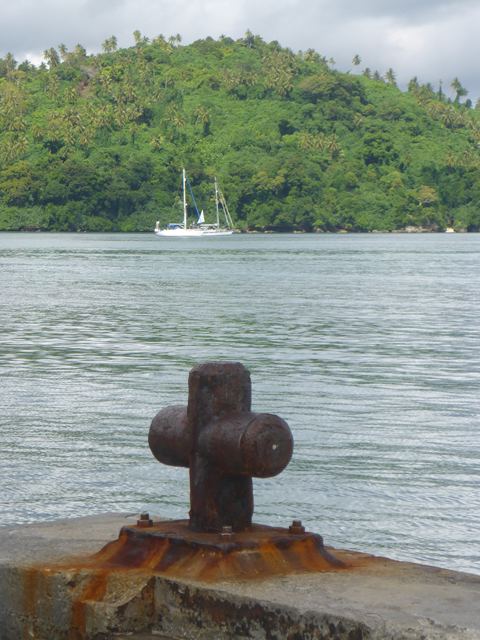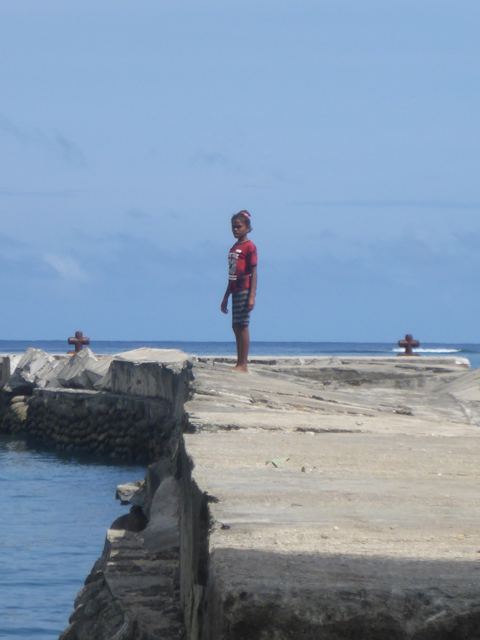2019 Vanuatu East South East to Epi

Zoonie
Tue 6 Aug 2019 18:29
|
East South East to Epi
Well it was nearer ‘South to Epi’ but that doesn’t have quite the same ring
to it does it? We did another Ken and left Ambrym at 6.20am out into the Trade
Winds once more, but this time they maxed at 20 knots according to the log.
Unfortunately, because of the easting in our direction we were close winded and
Zoonie could not sail and since the autopilot clearly was on strike we took
turns at the helm. Mercifully for us lazy helmsfolk the journey was only 26
miles and the experience was pleasant with warm winds, blue skies and a bluer
sea beneath.
I relaxed back leaning against the cockpit coaming and sitting on a comfy
cushion, while my right foot rested at the bottom of the wheel and occasionally
made a little steering correction. I watched the confused sea state, that
activity never becomes tedious and took the odd photo. The beautiful volcano
island you see is Ulveah sometimes known as Lopevi which is also the name of the
volcano. It is the most dangerous live volcano in Vanuatu and the island is now
permanently deserted after major eruptions between 1958 and ’59 and it finally
sent human folk running for their lives with its most powerful eruption in
1970.
Before then its height was 1413 metres but no one has been back to
re-measure since then! Just imagine it hurling out masses of molten rock and
regurgitating rivers of flaming and sparking lava down its slopes that hiss into
the seawater, bringing it to the boil like a million kettles. It is not often
that you can see the top of the volcano, we were fortunate.
Motoring Zoonie gently through the channel and reefs between Lamen Bay and
Lamen Island just off Epi we could see three moored yachts in the distance in
what turned out to be an expansive bay with a very gently shelving seabed for a
change. A familiar shape caught my eye as a manta ray leapt from the water to
our right and did a spectacular flip and as soon as we were at anchor two
turtles came to inspect us. I liked this place already.
Numerous fires smoked in and around the village. Like the aborigines these
people do cool burns everyday to keep the undergrowth around the trees clean and
short and to destroy the mosquito population that carries malaria and denghi
fever. Despite visiting many villages in our tour we only came across mosquitos
and their bites in Port Vila.
Epi is like an aging debutante and co-incidentally her demise took place at
about the same time the debutante culture died out during the global depression
of the 1930’s, followed by a number of catastrophic cyclones and then finally
with Vanuatu’s independence in 1980.
Let’s go back in time to the late nineteenth century when many Europeans
especially the French arrived and the fight for land started. Cattle stations
and coconut plantations were set up pushing locals off their land and Australia
became fearful that Epi would become an annex of France making their access
limited. So in 1878 and Anglo-French agreement that lasted for a century was
established to prevent this happening.
The settlers thrived at the expense of the ni Vanuatuans who died from
diseases, blackbirding and the effects of the introduced alcohol. Their chances
of working on the home plantations were limited when many French plantation
owners imported cheap labour from their colonies in Vietnam and local villagers
shipped to the sugar plantations in Australia and Fiji as slaves.
I never did see one but the island is scattered with mansions built on the
plantations and race courses frequent race days were held; the present day Epi
folk still enjoy horse racing at one nearby course.
I have mentioned blackbirding before, taking villagers by force to work as
slaves but one of the worst incidents of this cruelty happened at the hands of
an Epi resident, Dr Murray who owned the labour ship, The Carl. You will see
from the photos how big native canoes used to be used for inter-island travel.
Well about 90 villagers in canoes were enticed alongside the Carl with the offer
of trading goods. Dr Murray ordered their canoes to be sunk beneath them and the
survivors brought aboard his ship and locked below.
For two nights a battle raged as the captives tried to escape using their
bunks as battering rams only to be met with pistol fire from Murray and his men.
On the fourth morning the survivors were ordered to the deck and miraculously
five were uninjured, nine slightly wounded but the remaining 60 were dead. Then
a historic cover up quickly took place with the whitewashing of the ship and an
inspecting officer from HMS Rosario failed to notice the injuries on the
remaining captives and the bullet damaged quarters.
Despite this hideous secret eventually reaching Sydney justice was not done
when Murray and his two fellow murderers were acquitted following a public
outcry over them being charged, let alone convicted. Morale among the islanders
at that time must have been at an all-time low.
The village at Lamen Bay is called Vaemali and the island is the first and
last stop out of Port Vila on Efate for cruising yachts travelling north and
south respectively. We would go ashore in the morning but for now we watched the
blue smoke blowing through the foliage and right across the village and wondered
how healthy are the lungs of the villagers with smoke inhalation being a
commonplace thing? Death from malaria or lung cancer seems a cruel choice.
The sunset over Lamen Bay was beautiful and small outrigger canoes were a
long way out to sea as darkness fell, catching fish on lines. Each day islanders
come across the bay from Little Lamen Island for work and school and in the
olden days they would sail home in the evenings in their dugouts using banana
leaves to catch the island-filtered trade wind. That must have been a pretty
sight.
Thomas took our dinghy painter and introduced himself as chief and then we
met his wife who brought us the most beautiful hand of perfect bananas that
would put M & S to shame in exchange for our coil of rope. He showed us the
shop and gave us freedom to wander where we wanted.
A little further along we chatted with Charlie, a retired teacher whose
tottering grandchild clung to his trousers for support. Charlie also is worried
about the ulterior motive of the massive Chinese investments in the region. He
commented how his fellow islanders have struggled since the British left. “The
French they took from us, but the British gave us a way to live.”
In fairness the French also left a legacy of cuisine, church and costume.
The older generation ladies still wear the Mother Hubbard dress style brought to
the islands by the French Missionaries. The women like the patterned material
that they can use to make matching garments for the whole family, shirts for the
men. The dresses are very full with many pleats to allow a draft to fill them
and keep the wearer cool. They usually have a square neckline and short puff
sleeves with frills and much lace trim. Flaps over the hips allow the ladies to
fling the skirt around as they dance.
Today the young female generation favours blouses and skirts and the
traditional costumes of grass skirts are reserved for ceremonies and formal
gatherings like conferences.
Also the presence of grapefruit as a crop brought by the French, referred
to here by the French name pamplemousse and the delicious light white French
bread and croissants add to the enjoyment of food for modern ni
Vanuatuans.
Further along the well-worn double track we met Andy who introduced us to
his widowed mother who lives with them, she was busy with her pandanus mat
weaving. While we sat chatting in his neat home he offered us fruit and bread
which he could arrange for us to collect later, so we placed a small order as we
knew we’d be ashore again.
We knew these would be our last meetings with local villagers and we were
savouring each one. In fact this would be our final encounter with the
unsophisticated Pacific islands that we have enjoyed so much from the Marquesas
to Vanuatu over the past three years.
Andy helped run the small resort next door which as you can see is now on
Tripadvisor and the old photos on the poster give an insight into their means of
transport before the advent of the generic panga which we have seen throughout
the south west pacific.
In the afternoon we snorkelled all over this wide bay. There were dense
gardens of healthy coral, lots of familiar and unfamiliar fish but the
unexpected high light was a swim with a very relaxed turtle who watched us as we
watched him/her.
Back ashore holding the bag of still warm, smoky bread I probed Andy’s
thoughts on the shelves of tinned fish and freezers of tuna that can be found in
these fishing communities all over Vanuatu. We concluded it was trade to benefit
mostly China and if he hasn’t caught fish for a few days his wife might buy a
tin on her way back from school with their three children, and left it at
that.
Towards the other end of the village we passed perfectly manicured gardens,
high hedges bordering narrow paths and in one of the photos you will see what
reminded me of a typical English cottage garden complete with thatch. Eleanor
owned the guesthouse and explained that she had just had a cancellation. I said
I hoped she’d kept the deposit as I did with my guesthouse in Yarmouth on the
Isle of Wight with no guarantee I’d re-book that room at full price.
She would like more business and says she will advertise when some friends
had set up jungle walks and tours to encourage visitors. She recently had a
British professor with his Spanish wife stay for five days to study the reef and
Rob and I wouldn’t mind staying there ourselves. There are delightful guesthouse
all over these islands, with basic rooms and shared bathrooms and local food
prepared with loving care by their owners. Hmm, a thought for the future with
family maybe.
Doris was born and bred on Ambae, in the village we visited; she was on her
way home with her daughter and niece who was named after her. I wondered if her
new family did this to help her feel at home on this island where she came to
marry.
The High School is very modern looking and sits inshore from the
substantial jetty where cattle were driven years ago onto ships, or possibly
their meat was loaded ready for export. It is no longer used and the locals have
reverted to landing goods from ships directly onto the beach.
The next day saw us sitting out a blow with five other yachts, our plans
for a ‘Ken’ departure blown to the winds. I worked on my Ambae blog and baked a
cake. The constant pressure of the Trade Winds and the messy sea state they
produce is getting to Rob. They certainly are a challenge for the cruising
yacht. Perfect if the vessel is shooting through south to north but a different
story if a cruising circuit is involved.
We turned off the wind generator at night to avoid the moaning noise it
makes. The wind started easing to gusts and I once again broached the subject of
a night crossing over the 80 or so miles to Port Vila, the capital on Efate. Rob
prefers to avoid night watches at sea but for me to arrive tired at a new port
with falling light after a day sailing is not a sound idea whereas arriving at
first light in the morning having had at least a few hours of sleep makes better
sense. Also cool night time sailing avoids the heat of the sun and allows for
the potential at least of some rest.
Fortunately he agreed so we decided to leave at 5.00pm that day to arrive
the day before the Independence Day Celebrations, but not before I had drawn up
the scariest set of words on my Android phone Wordscapes
Game!; |
